The Taipei Digital Art Festival (台北數位藝術節), now in its eighth year, brings together exhibitions, film screenings, performances and forums that cast a spotlight on the technologically-advanced art form that requires the vision of an artist as much as that of a software engineer.
This year’s theme is data-neurons. The festival examines how new media artists utilize data and computing to explore aesthetic and technological possibilities.
Chiu Chih-yung (邱誌勇), one of the festival’s curators, says that as digital technology has become a vital part of today’s society, we have come to rely heavily on computers to gain and process information, as well as tackle everything from daily chores to job tasks and schoolwork. He added that in recent years, the term “big data” has become ubiquitous, referring not to the concept of database we traditionally know, but the infinite interconnection among databases enabled by cloud computing.
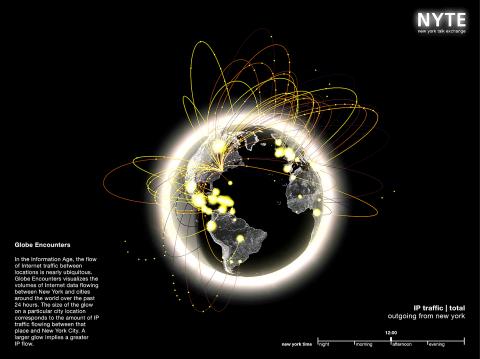
Photo courtesy of the Taipei Digital Art Center
“The idea of big data is not just about the effective control of data. It stresses the connection among databases through cloud computing … One question it raises is how we put massive, everyday information into application,” says Chiu, who is also a professor at Providence University’s Department of Mass Communication.
Possible answers lie in several works on display at the international Digital Art Exhibition. New York Talk Exchange, for example, is a project by Senseable City Lab at the Massachusetts Institute of Technology (MIT) that illustrates the daily life of New Yorkers by analyzing large volumes of long-distance telephone and IP data flowing between New York City and other metropolises around the world using data visualization.
“We have recently seen lots of works like [MIT’s]. They all involve utilizing the massive quantity of data through data visualization in order to show the traces of our everyday life,” Chiu points out.
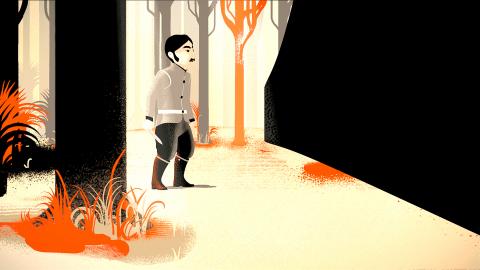
Photo courtesy of theTaipei Digital Art Center
Voices of Aliveness by Japanese artist Masaki Fujihata invites participants to shout while riding a bicycle equipped with a recorder and video to vent their frustration. Their shouts and their bicycle trajectory are then converted to the shape of rings on a computer screen, forming a tower-like structure in cyberspace.
Crossing disciplines
Chiu says that while the global trend for digital art tends toward complex projects that can’t exist without the participation of technical wizards and engineers, it has also increasingly turned hybrid and inter-disciplinary. One example is Reactor for Awareness in Motion, a research project initiated by Japan’s Yamaguchi Center for Arts and Media in 2011 that aims to explore the possibility of interaction between dancers and technology.
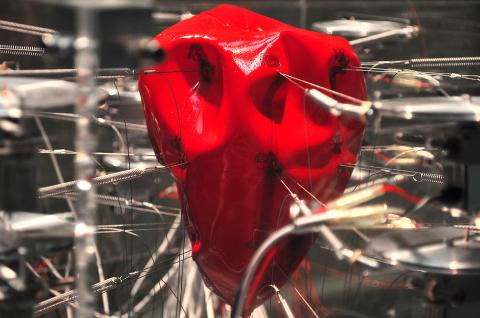
Photo courtesy of the Taipei Digital Art Center
Another crossover attempt is Threads, a performance art piece that is a collaboration between Grame — Centre National De Creation Musicale in Lyon, France and the Taipei Digital Art Center (台北數位藝術中心). The work combines different theatrical elements including dance, imagery and sounds created by French composer Roque Rivas, Berlin-based choreographer Sun Shang-chi (孫尚綺) and digital artist Yeh Ting-hao (葉廷皓).
The annual Taipei Digital Art Awards (台北數位藝術獎), meanwhile, recognizes and honors those working in Taiwan’s evolving digital field. This year, 12 works were nominated for the national competition. They were created by young artists who were “born and grew up in the digital era and to whom digital products are a part of life,” Chiu says. Most of the nominated works also utilize computing technologies to visualize data, showing that local digital creators are in tune with international trends.
“However, as the environment for digital art in Taiwan is less mature and healthy, young Taiwanese artists don’t have the resources and support to create works that are on the same scale as artists from other countries. Showing international and local works at the same venue will help to fill in that gap,” the professor says.
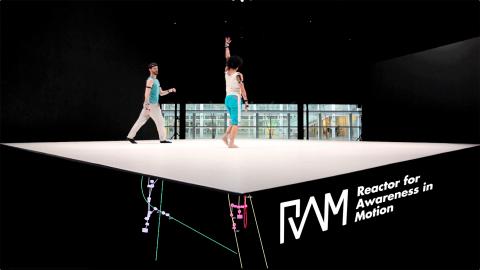
Photo courtesy of the Taipei Digital Art Center
App art
To demonstrate how digital art can be transformed into everyday use, festival organizers have put together two exhibitions to shed light on the application of computer games and designed products using digital technologies such as 3D printing. A selection of award-winning works from the App Art Award, organized by the Center for Art and Media (ZKM) in Karlsruhe, Germany each year, brings attention to works of art in app format.
OscilloScoop, for example, is an application for iOS that creates hip-hop, dance and techno tracks by sliding and stretching the screen. An app for Android, Electric Sheep is a distributed system made up of 450,000 participant computers and people to render animated artificial life.
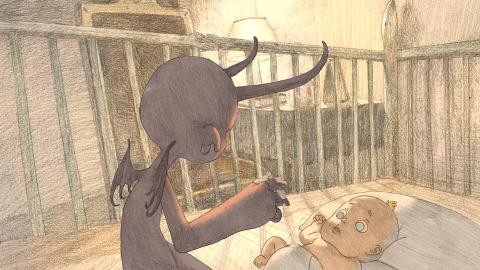
Photo courtesy of the Taipei Digital Art Center
Last but not least, animation enthusiasts won’t want to miss the festival’s annual animation showcase featuring award-winning films from this year’s Annecy International Animation Film Festival and Ottawa International Animation Festival, as well as selected works by animators in Chinese-speaking regions.
For those feeling intimidated by the technologically sophisticated artworks on display, it might be a good idea to join one of the guided tours. Art professors will lead groups through the exhibition on Saturdays and Sundays at the exhibition venue, Tobacco Factory (製菸工廠), which is open from 10am to 6pm on weekdays and 10am to 8pm on weekdays.
For more information, visit www.dac.tw/daf13.
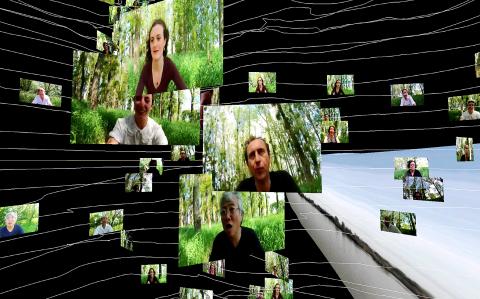
Photo courtesy of the Taipei Digital Art Center
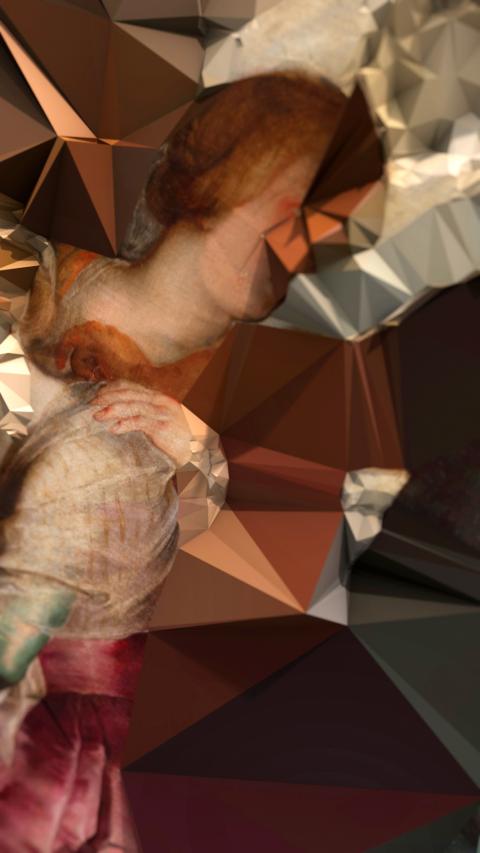
Photo courtesy of the Taipei Digital Art Center

Photo courtesy of the Taipei Digital Art Center

April 7 to April 13 After spending over two years with the Republic of China (ROC) Army, A-Mei (阿美) boarded a ship in April 1947 bound for Taiwan. But instead of walking on board with his comrades, his roughly 5-tonne body was lifted using a cargo net. He wasn’t the only elephant; A-Lan (阿蘭) and A-Pei (阿沛) were also on board. The trio had been through hell since they’d been captured by the Japanese Army in Myanmar to transport supplies during World War II. The pachyderms were seized by the ROC New 1st Army’s 30th Division in January 1945, serving

The People’s Republic of China (PRC) last week offered us a glimpse of the violence it plans against Taiwan, with two days of blockade drills conducted around the nation and live-fire exercises not far away in the East China Sea. The PRC said it had practiced hitting “simulated targets of key ports and energy facilities.” Taiwan confirmed on Thursday that PRC Coast Guard ships were directed by the its Eastern Theater Command, meaning that they are assumed to be military assets in a confrontation. Because of this, the number of assets available to the PRC navy is far, far bigger

The 1990s were a turbulent time for the Chinese Nationalist Party’s (KMT) patronage factions. For a look at how they formed, check out the March 2 “Deep Dives.” In the boom years of the 1980s and 1990s the factions amassed fortunes from corruption, access to the levers of local government and prime access to property. They also moved into industries like construction and the gravel business, devastating river ecosystems while the governments they controlled looked the other way. By this period, the factions had largely carved out geographical feifdoms in the local jurisdictions the national KMT restrained them to. For example,

Shunxian Temple (順賢宮) is luxurious. Massive, exquisitely ornamented, in pristine condition and yet varnished by the passing of time. General manager Huang Wen-jeng (黃文正) points to a ceiling in a little anteroom: a splendid painting of a tiger stares at us from above. Wherever you walk, his eyes seem riveted on you. “When you pray or when you tribute money, he is still there, looking at you,” he says. But the tiger isn’t threatening — indeed, it’s there to protect locals. Not that they may need it because Neimen District (內門) in Kaohsiung has a martial tradition dating back centuries. On